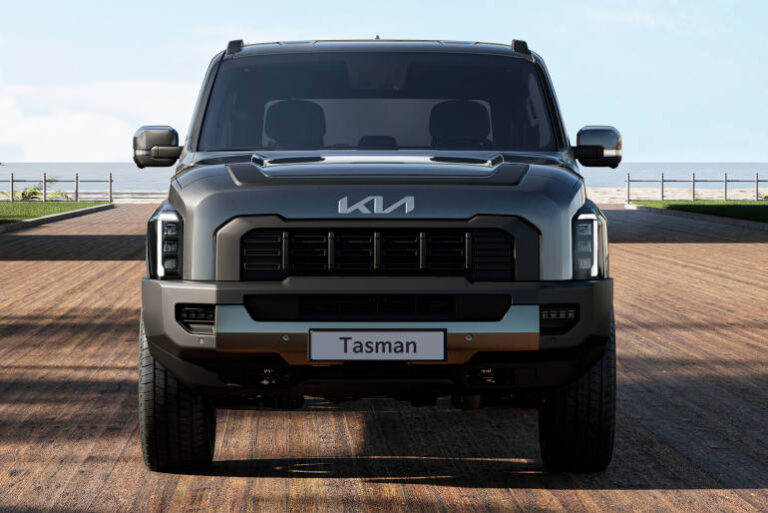Kia Australia has declared that it will sell the all-new Tasman ute range in big numbers, with plans to account for “seven to 10 percent” of all ute sales in the market.
At the current run rate, that would mean the divisively-designed Tasman cab-chassis and pick-up truck models would be targeting as many as 23,000 sales per year. Ambitious for a new player, especially considering the specs.
Under the bonnet of the Tasman is a tried-and-tested 2.2-litre turbo-diesel four-cylinder engine with 154kW of power and 441Nm of torque – numbers bested by many players in the market. However, the South Korean ute has the benchmark towing capacity of 750kg (unbraked) and 3500kg (braked), and the business has already stated it will roll out a raft of locally-developed accessories when the ute launches in 2025.
Pricing and further specs are to be determined, but Kia Australia has stated it has loaded the new model with all the active safety technology and equipment to achieve the maximum five-star ANCAP safety rating – often a mandatory consideration for fleet customers.
Dennis Piccoli, chief operating officer for Kia Australia, outlined that fleet customers were vital in the development process to help shape the brand’s first ute to suit buyer and user expectations.
“In the whole development process, we’ve had a select group of fleets come through … and we do pretty well in that fleet space with our SUV lineup historically,” he said.
“So they’ve been involved from the get go, had a quick look at the car, and we’ve had a group in yesterday morning where we showcased it, walked them around it, and got a bit of feedback and got some opinion,” he said at the launch event of the Tasman in late October.
“And then equally, in the next few weeks, we have another group heading up to Korea to have a look at, and drive it.
“So it’s in its infancy at this point in time, but there’s some prospects out there. Clearly, from a volume perspective, we’ve been talking forever about hitting around 20,000 units,” he said.
“And we think the fleet versus the private/tradies and all that sort of stuff, we reckon the mix is probably going to be around 50:50,” Mr Piccoli said. “There’s scope in that corporate [space] there’s scope in government, local council, as well as in that rental space. So we reckon probably 10,000 a year or thereabouts, is probably where it needs to be.
“So I think there’s plenty of opportunity, and we’ve got stuff that we’re working through at this point,” he said.
The keyboard-warrior reaction to the design of the Tasman has been negative, to say the least, with plenty of armchair critics casting aspersions on the utilitarian, boxy styling of the Tasman.
According to the Kia’s Next Design Exterior Division, John Buckingham, the Tasman is made to look different, and he acknowledged it may seem confrontational at first.
“More than anyone, designers are emotionally driven people, right? So designers,we start off by trying to create this emotional connection with the product and this character… we’re that cog in the wheel to create this kind of emotional connection with this car.
“I think it’s a challenging one to explain why people might not resonate with it, but what I can do is I can explain why we believe people should be or are going to resonate with it. So the car itself is built on function. It’s an industrial design exercise,” he said.
“From our point of view … we’ve seen it for a while now, both interior and exterior, and we’ve seen it on the roads, driving around, we’ve seen it in Korea compared to the other products that are in Korea. And it stands out – and it stands out for good reason, because it’s bold, upright, strong and capable, and … that aesthetic sense is going to result in people understanding what the purpose of it is as well,” he said.






